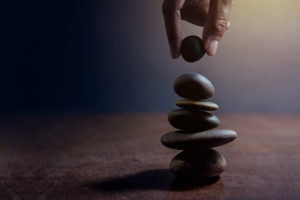Tonight begins the festival of Sukkot. This year, I find myself thinking very different thoughts about his holiday. Normally, I am focused on shaking the lulav and holding the etrog while praying with my whole body in all directions with a pure soul, cleansed during the High Holy Days…well, that is still there for me this year. I’m also focused on things like the impermanence of life and appreciation for nature and its bounty. Sometimes I’m focused on this being “the season of our joy,” although this year the world seems like a tough place to feel joy. So, instead I am thinking about water and being in the flow.
I just finished reading an email from Rabbi Arthur Waskow of The Shalom Center and Rabbi David Seidenberg, Eco-Judaism Fellow of the Shalom Center and creator of www.neohasid.org. In this email, Rabbi Seidenberg talks about Sukkot and the lulav, which is made up of a palm frond and a myrtle and a willow branch, in relationship to water:
“Sukkot is about water. Everyday in ancient Israel the priests poured water on the altar and prayers from the blessings of water were made. The four species of the lulav are all about water too. The lulav itself, the date palm, was the most water-loving plant of the desert; the myrtle (hadas) needs the most water of the mountain plants; the etrog fruit among agricultural trees requires the most rains to grow; and of course the “willow of the brooks” (arvei nachal) are synonymous with abundant water, growing often with their roots right in the streams.
“Each of these species represents one of the primary habitats of the land of Israel: the desert, the mountain, the lowland (sh’feilah in Hebrew), and the river or riparian habitats. Together they make a bioregional map of the land of Israel, and they hold in greatest abundance the rains of the year that has passed. That’s why the tips of each species, the pitom of the etrog, the unsplit central frond of the lulav, the end leaves of the myrtle and willow, cannot be dried out: it would be like praying for good health while eating junk food.
“Bringing these four together, we wave them in all directions around us, up and down, praying that the coming year will again bring enough water for each of these species to grow and thrive, and with them all the species of each habitat. All the other explanations you may have heard for the four lulav species are beautiful midrashim, but this is the ground-level reason for it all. We are praying, fundamentally, for the climate, for the stability and sufficiency of the rain and sun, on which every being living upon the land depends.”
Just as every living being needs water, just as the four species we hold on Sukkot require and represent water, humans desire to be in the flow…the Divine flow. We want to feel as if we are being carried easily and effortless along through life like the water in a stream filled to the brim and moving in a direction that seems Divinely guided. The water moves over and around obstacles without hesitation, continuing on its path seamlessly. It seems to have direction, purpose, and to be unable to stop. Even a fallen log rarely stops it, rather it finds its way around or over, sometimes pooling momentarily before going on its way.
We all want to be in the flow. Much of our lives, however, we feel caught in a struggle to move forward. We fight ourselves and others and outside situations, sometimes not wanting to get going, sometimes wanting to get going but feeling blocked. We feel as if we live in a drought. The river bed is is dry; no water passes along it floor to help us along. No flow exists for us to access. We can’t find water; we have no connection to that life-giving Source.
We all need a rainy season from time to time – all the time – to help our lives move along, to get the river flowing again. Then we can put our boats it in the water and go with the flow. We can simply float along or ride the rapids, always, however, propelled by the energy beneath us, around us, guided by the Source.
Divine energy…it’s a river constantly flowing. Maybe Sukkot provides a reminder that even when everything around us seems parched and each step we take feels difficult and somehow blocked, underneath it all – in the invisible world that permeates everything, that drenches all that is this physical world in which we live and that we are – the river still flows swiftly and fills its banks to the brim. And as we pray with our whole body and soul, we can access that flow, we can place ourselves in the river once again.
At least that’s what I’m thinking – and praying for – this Sukkot.

